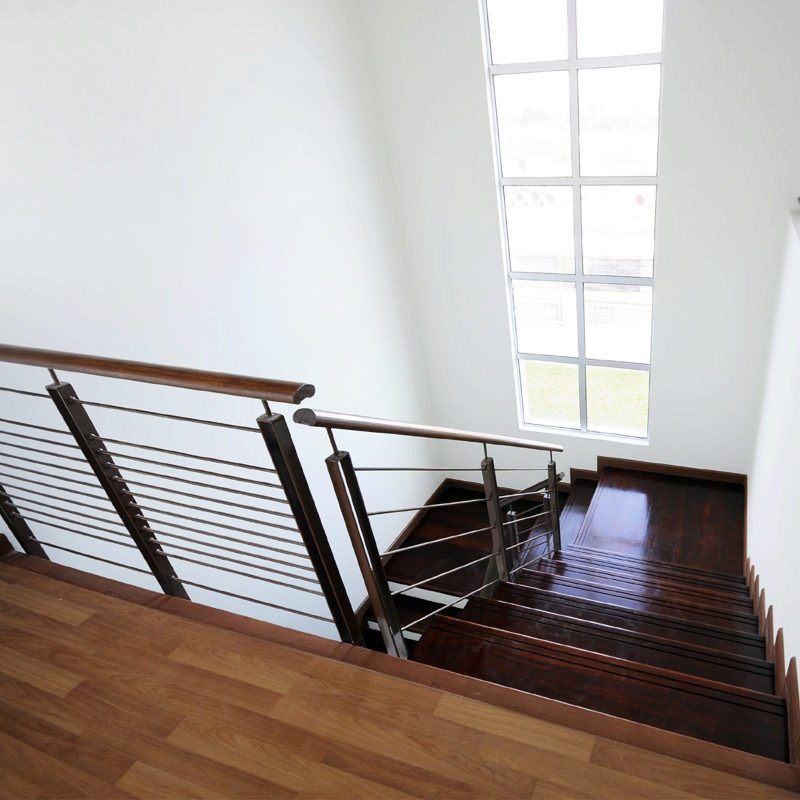
Remodeling with Stainless Steel Cable Rail
Making it Disappear

In grand southern homes a sweeping staircase that lures the entrant to the home is expected. Visions of Gone with the Wind’s breathtaking stairway fill most of our minds. Most homes don’t have the budget for a Gone with the Wind stairway and when the home is remodeled the stairway goes in a different direction–stairways that disappear. We are not talking about revolving tricks like Scooby Doo and Shaggy might see when solving a mystery. Rather, homeowners want to see through the stairway. The posts, handrails and infill of the stairway needs to be minimalist. The preferred way to achieve this is with stainless steel cable rail. The cables are supported by posts that are placed at both ends of the cable rail run and posts are placed in the center to keep the deflection of the cables to a minimum. The handrail is typically rectangular and simple in shape.
Post Selection
Cable rail can be supported with wood posts, steel posts or stainless steel post. Wood posts are most common in exterior deck applications and stainless steel are the most common for interior applications. Stainless steel and steel posts painted black can give the illusion of the stairway disappearing. Stainless steel posts have a brushed finish similar to what is seen on refrigerators or other stainless steel appliances and the sliver-gray slightly reflective finish is quickly dismissed by the eye. Steel posts are powder coated with a satin black finish with enough sheen that they are durable, but not enough shine to be objectionable. Posts are anchored to the stairway as either a sidemount or a floor mount. The floor mount is the most common. It is critical that proper blocking be put underneath the floor or stair treads during construction so that there is sufficient material for the mounting screws to hold the posts in place. Posts are typically pre-drilled and ready to accept cable rail. Careful thought needs to go into the selection of posts. Posts come with a variety of hole configurations to make turns and to allow cable to pass through them at angles.
Handrails
Handrails are typically wood for interior residential applications. Wood handrails are warm to the touch, and provide a good accent to furniture and other pieces in the home. Wood handrails are also the easiest to fabricate and cut on a job site. Stainless steel and powder coated steel handrails can be be fabricated to exacting measurements.
Cable Attachment
The easiest part of a cable rail installation is installing the cables. The posts and handrails must be installed first, then the cables can be strung through the posts, cut and the end terminations installed. Typically one end termination is applied at the factory and the opposite end is cut and the termination applied in the field. Measuring is easy and does not need to be more precise than +/- 1/8″ making this a great homeowner job. Before cables are cut and terminations are installed it is important to check to be sure all of the slack is pulled from cables and to be sure that the insert sleeves have been installed. Tightening of the cables is done with an allen wrench and a simple fitting holding tool.
Lifetime Product
Stainless steel products are an easy sell because they offer a lifetime of enjoyment. Simple cleaning is all that is required with a stainless steel cleaner. Most cable rail products are made from 316 or 304 stainless which will not rust and their is no finish that will peel or come off with use. Stainless can take decades of handling and cleaning. If you have more questions or concerns call our staff at 866 226 6536 or visit stairsupplies.com or our YouTube channel http://www.youtube.com/user/viewrail



